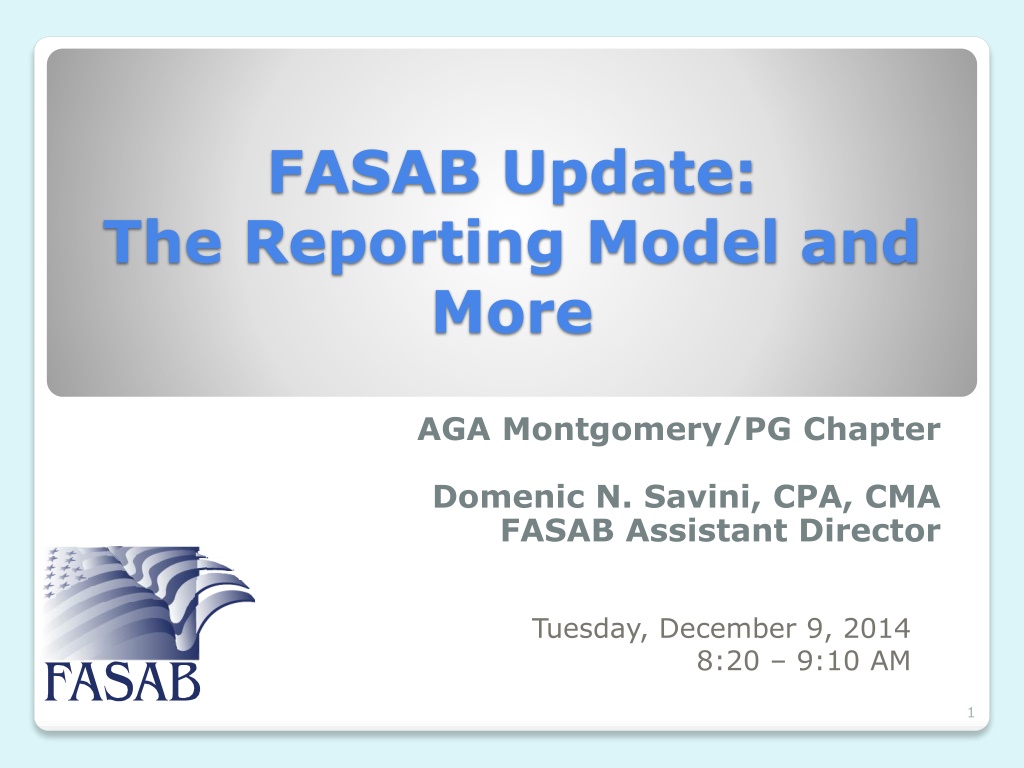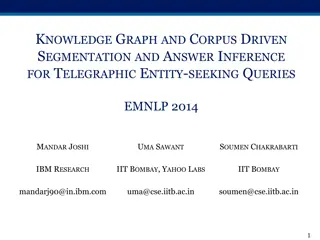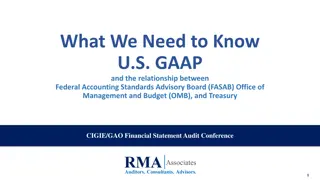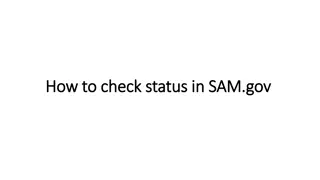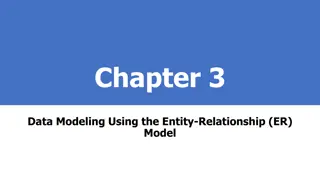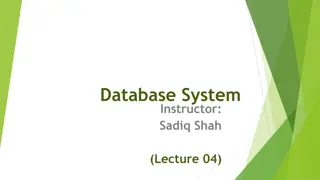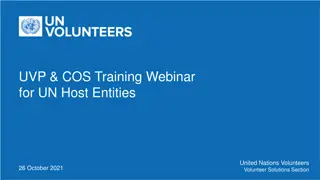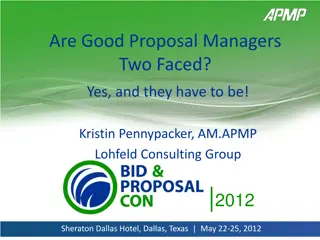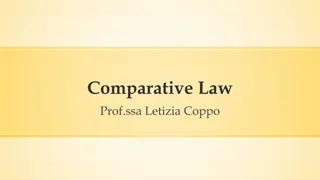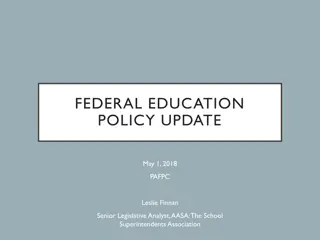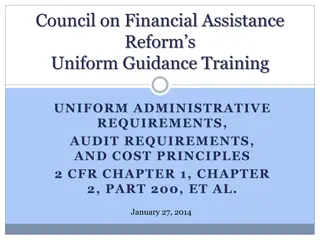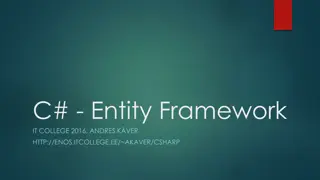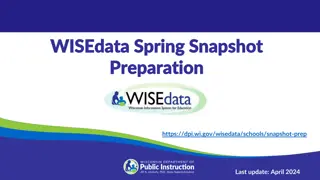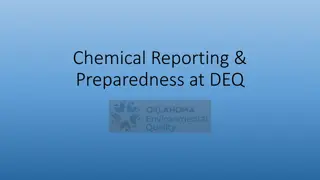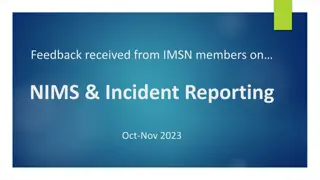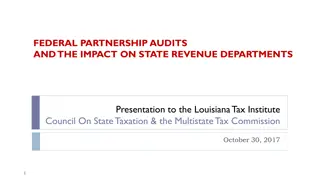FASAB Update: The Federal Reporting Entity Proposal
Discussions on the Federal Accounting Standards Advisory Board (FASAB) update regarding the reporting model, including proposals for the General Purpose Federal Financial Reports (GPFFR) and the distinction between consolidation entities and disclosure entities. The presentation covers principles of inclusion, characteristics of consolidation entities, and guidance for identifying administrative assignments among component reporting entities.
Download Presentation

Please find below an Image/Link to download the presentation.
The content on the website is provided AS IS for your information and personal use only. It may not be sold, licensed, or shared on other websites without obtaining consent from the author. Download presentation by click this link. If you encounter any issues during the download, it is possible that the publisher has removed the file from their server.
E N D
Presentation Transcript
FASAB Update: The Reporting Model and More AGA Montgomery/PG Chapter Domenic N. Savini, CPA, CMA FASAB Assistant Director Tuesday, December 9, 2014 8:20 9:10 AM 1
Disclaimer Views expressed are those of the speaker. The Board expresses its views in official publications. 2
OVERVIEW Reporting Entity Almost Final! Review of Current Projects: Reporting Model and the NAPA Study Leases Public-Private Partnerships Risk Assumed Defense Request Implementation Issues Potential Projects Questions 3
Federal Reporting Entity Proposal Include in General Purpose Federal Financial Reports (GPFFR) all organizations: Inclusion Principles budgeted for, controlled with potential for risk or reward, or owned Misleading to Exclude Distinguish between consolidation entities and disclosure entities 4
Federal Reporting Entity (CONT.) Proposal Consolidation entities are: Financed by general taxes, Goods and services on a non-market basis, Risks and rewards fall to the federal government, and Governed by/clearly linked to elected officials. Information for consolidation entities is to be consolidated in financial statements. 5
Federal Reporting Entity (CONT.) Proposal Disclosure entities are those with: Less direct involvement & somewhat independent from elected officials, Limited taxpayer funding (may be financially self- sustaining.) Limited risks and rewards to the federal government Some relationships are not expected to be permanent Information is disclosed in notes to meet three objectives-Relationship & Organization, Relevant Activity, and Future Exposures. 6
Federal Reporting Entity (CONT.) Proposal Guidance for identifying administrative assignments to component reporting entities. Other: What entities are subject to SFFAS 34 the GAAP hierarchy for federal entities How to deal with: FASB-basis information for consolidation entities Different year ends for disclosure organizations Related parties Amendments to SFFAC 2, Entity and Display Illustrations & Flowchart 7
Reporting Model Seeking to enhance the benefits of accrual basis financial statements Input to the Board: User needs surveys, focus groups, and roundtables FASAB Task Force on Government-wide Financial Reports (Dec 2010) CFO Act 20-Year Report Input from task forces focusing on agency level reporting on cost, budget and performance Statement of spending pilots Study of other sovereign government practices NAPA Study CFO Input 9
Reporting Model (cont) -NAPA Results- Data highly accurate and granular, but challenges in Analyzing and transforming data Linking budget, cost, and performance Revenue source and operational approach influence financial data usage CFO organizations need to shift focus 10
Reporting Model (cont) -NAPA Results- Agencies should strengthen the program knowledge of CFOs so they can provide better information for managing the business. Certain skill sets are needed. Specifically finding people that are both data oriented and have an understanding of the business of the agency is difficult. Agencies should link budget information to costs and performance. Agencies should develop programmatic and financial dashboards that executives can use to support quicker decision making. Agencies should enhance existing information systems and integrate them better. Congress and OMB should develop initiatives to encourage agencies to focus on different ways to report costs and results. 11
Reporting Model (cont.) Additional Research Results What We ve Learned from Users 1. Contextual Information 2. Budget Information and Comparison of Budget to Actual (SBR hard to understand.) 3. Accrual Information Useful to Citizens Hold managers accountable for more than use of appropriations Want to know the cost of programs and what they got Interested in long-term needs (liabilities) Various perspectives on cost are being sought and offered (but rarely cost of programs) 4. Revenue Whether exchange revenues cover related costs Who pays what taxes 5. What did we get and how much did it cost? Performance information! 6. Users want broad context effect on the nation. 7. Trends 12
Reporting Model (cont.) Research Results How Users Want Information Interactive Plain-Language Charts, Graphs, or Pictorial Illustrations Brief Video Summarized information with timely access to details. Easily accessible Ability to perform queries 13
Reporting Model (cont.) Next Steps Board will begin developing conceptual guidance focusing on flows Accrual Budgetary How should accrual and budgetary flows be aligned How should flows be disaggregated 14
Reporting Model DISCUSSION 15
Leases Are all leases financings? 16
Leases (cont.) FASAB is partnering with GASB to develop standards for governmental organizations. Tentative decision to establish a single model (with exceptions for short-term arrangements). Leases create assets consisting of the right to use a resource. Leases create liabilities consisting of the obligation to pay for the resource. The focus may be on the interest cost associated with leases. 17
Leases (cont.) Tentative decision to treat intra- governmental leases as a separate class of lease activity. Simplified approach similar to current operating lease accounting. 18
Leases DISCUSSION 19
Public-Private Partnerships Exposure Draft Comments due by January 2, 2015. Due to budget pressures, federal agencies have increasingly turned to public-private partnerships (e.g., PPPs, P3s) to accomplish goals Transparency of the full costs and risks of such partnerships is the overall objective Specific objectives include: Defining what a federal P3 looks like Providing guidance for the recognition and measurement Risk Reporting Consider implications for other arrangements related to P3s (sale-leaseback or other long-term arrangements). 20
Public-Private Partnerships Proposed Disclosures: 1. P3 purpose, objective and rationale 2. Funding structure 3. Operational structure including entity s rights and responsibilities 4. Identification of significant contractual risks Probable losses Reasonably possible losses Remote losses 21
Public-Private Partnerships Is there a need for recognition and measurement guidance? Cases: Provide use of land in exchange for electricity Build and maintain housing on federal land rent paid by service members Provide facilities for specialized work in exchange for state development support and federal payments for services 22
Public-Private Partnerships DISCUSSION 23
RISK ASSUMED The federal government assumes risk through policies to stabilize financial markets and the economy Current FASAB standards are limited to: Insurance contracts, and Explicit guarantees (other than loan guarantees) Updated standards will address All risk assumed by the government In order to meet the stewardship and operating performance objectives of federal financial reporting 24
RISK ASSUMED (cont.) - Three Phases - Phase I: Insurance and Non-Loan Guarantees Phase II: Entitlement Programs, including: National Defense, Security and Disaster response Other potential effects on future outflows: regulatory actions, Government Sponsored Enterprises (GSEs), etc. Phase III: Commitments Obligations Other risk areas 25
RISK ASSUMED (cont.) - Insurance & Non-Loan Guarantee Phase - The Task Force : Has defined federal Insurance and Non-LoanGuarantee programs: To ensure all current and future programs are captured in updated standards/disclosures In defining the measurement methodology: Has compared Insurance/Non-Loan Guarantee programs to Credit Reform programs and accounting Continues to monitor FASB Insurance Contracts Exposure Draft Status Will determine the measurement model To ensure consistent reporting by all Insurance and Guarantee programs 26
RISK ASSUMED (cont.) - Insurance & Non-Loan Guarantee Phase - Potential Disclosures: Program Operating Results Major revenue sources Subsidy Types of expenses Trends in Operating Results Explanation of Changes in Liability Balances Insurance in force (maximum exposure) 27
Risk Assumed DISCUSSION 28
Potential Projects What topics do you think should be addressed in the near future? 29
Questions? Thank you and make sure to comment on our ED s!!! Happy Holidays!!! 30
Contact and Website Information General inquiries can be directed to fasab@fasab.gov Phone: 202 512-7350 Dom: 202-512-6841 www.FASAB.gov Listserv (sign up for emails) Exposure Drafts Active Projects assigned staff 31
